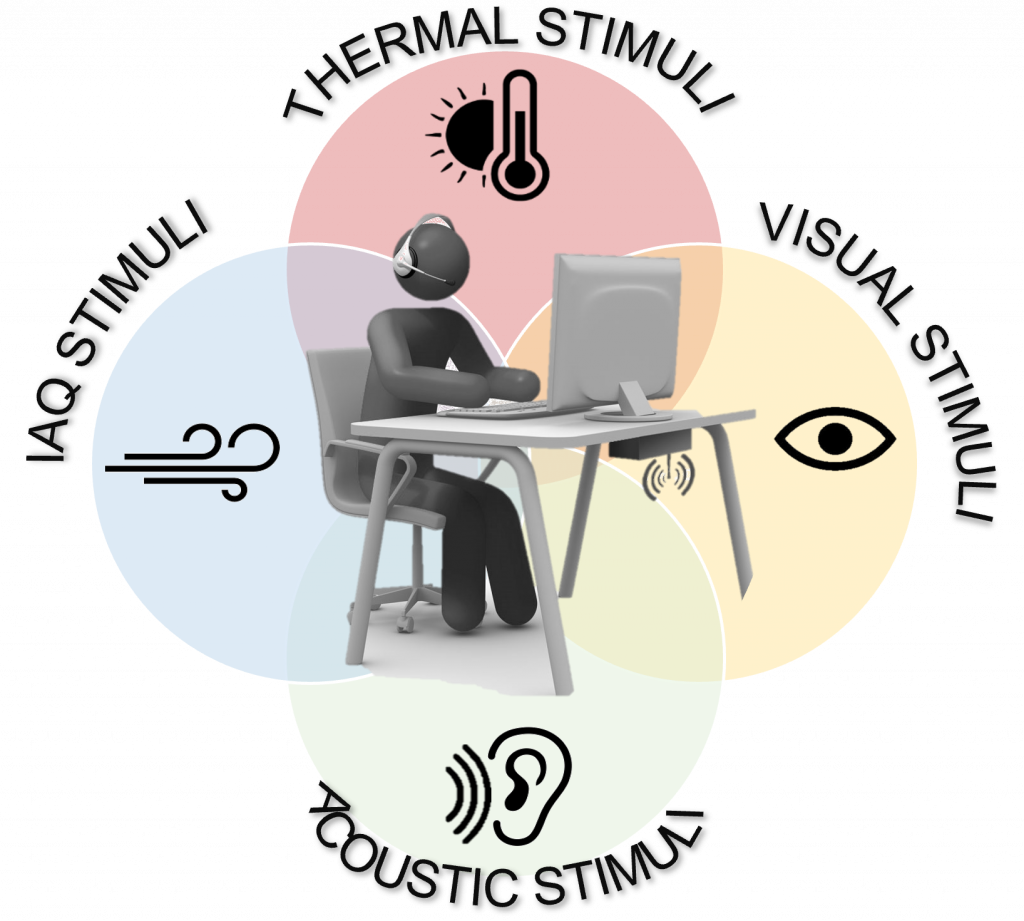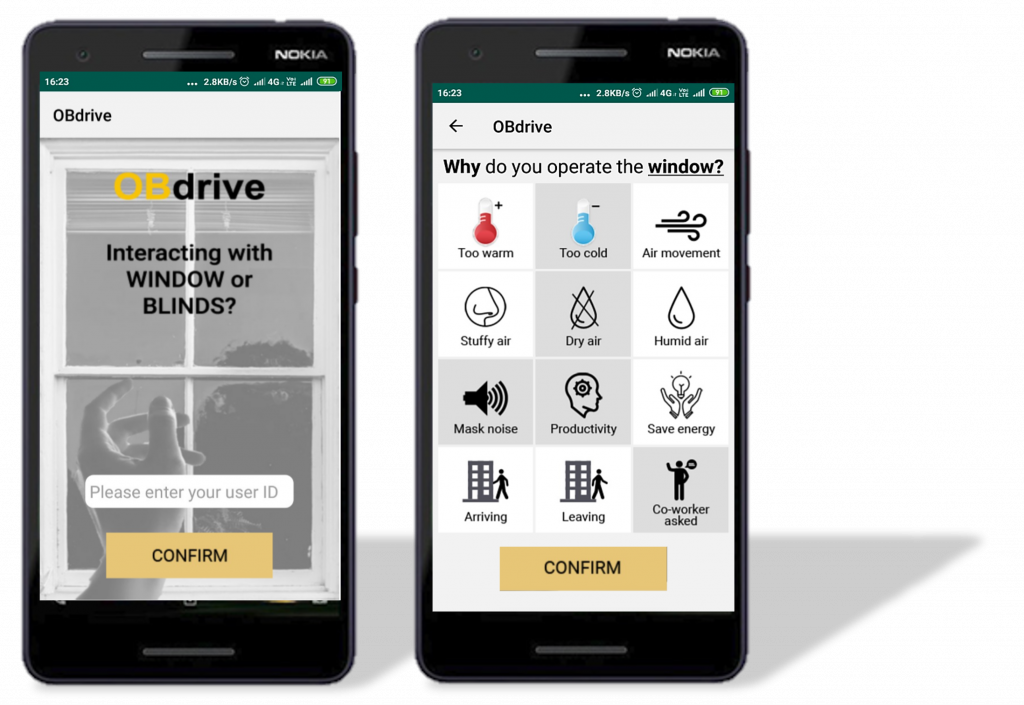“Interaction between energy use, COMfort, Behaviour, and INdoor Environment in Office Buildings”

Project Description
The project aims at overcoming uncertainties in predicting energy consumption of HVAC (Heating, Ventilation and Air-Conditioning) and lighting services in open plan offices by developing an integrated approach to study the cause-effect relationship between occupants and combined in-door environmental factors (thermal, visual, air quality and
noise). The impulse behind dynamic and multivariable behaviour of occupants are identified through the field study with the implementation of point-in-time mobile questionnaires coupled with multi-dimensional (indoor and out-door) environmental measurements. Building occupants, whenever they perform a certain (dis)comfort-related action
(e.g. window opening or closing), are asked to indicate the motivation behind the control behaviour on our developed mobile application OBdrive. This holistic approach allows to gain a more comprehensive understanding of occupant behaviour towards bridging the gap between real and predicted energy use in office buildings.
Background
- Occupant behaviour is one of the key factors of uncertainty when predicting energy use in Building Energy Simulation Tools (BEST)
- A more holistic understanding of the human-building interaction is needed to overcome the energy performance gap
Methodology
- Point-in-time surveying on behaviours (windows, blinds, lights)
- Long-term surveying (individual characteristics/preferences, group dynamics)
- Global comfort evaluation through field measurements and subjective responses
Goals
- Gain insights on the multivariable-driven human-building interaction in open plan offices (Fig. 1)
- Development of an integrated approach to explore the dynamic cause-effect relationships between occupants, combined environmental factors, and energy use

Results
- Exploration of an extensive set of drivers at work including individual characteristics and preferred adaptive opportunities
- Investigation of group behaviours
- Development of a comprehensive and multidimensional OB model for implementation in building energy simulation

Publications
- Barthelmes V. M., Guillaumat F., Khovalyg D., Impact and comparison of standard-based, stochastic, and tracked user behavior in open space offices: A Swiss case study, Building Simulation 2021 (BS2021)
- Barthelmes V.M., Karmann C., Licina D., Wienold J., Andersen M., and Khovalyg D., Triggers behind human-building interactions from a user perspective: Results and effectiveness of capturing motivations in real-time, 6th European Conference on Behavior and Energy Efficiency (BEHAVE 2021)
- Barthelmes V.M., Karmann C., Gonzalez Serrano V., Chatterjee A., Licina D., Andersen M., and Khovalyg D., Global Environmental Stimuli and Human-Building Interaction in Open Space Offices: A Swiss Case Study, 2021 ASHRAE Virtual Winter Conference
- Gonzalez Serrano V., Barthelmes V.M., Karmann C., Khovalyg D., and Licina D., Investigation of perceived air quality, occupants’ behaviour and air pollutant levels in two open-space office buildings in Switzerland, Indoor Air 2020